Belgian shepherd dogs: features, types and content
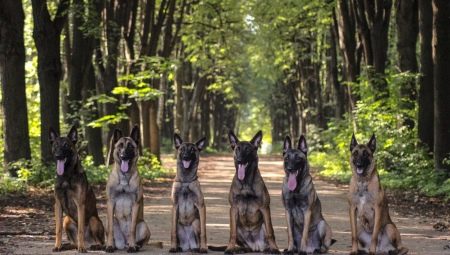
The Belgian Shepherd breed is not widespread, since most breeders prefer to deal exclusively with representatives of the German variety. But if you read the detailed description of its representatives, find out the features of their character, the opinion of lovers of large dogs will radically change.
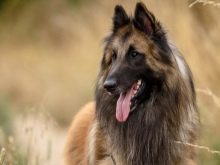

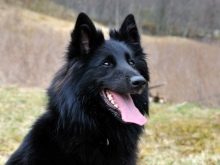
Origin story
As stated in many scientific records, the history of the Belgian Shepherd Dogs begins in ancient times. This is evidenced by the letters dating back to the 17th century, which provide information about the four-legged shepherd's assistants, where the lion's share of the dogs' work consisted in looking after a large number of livestock.
But despite this fact, most of the breeders are sure that the history of the Belgian Shepherd Dogs began much earlier. After all, scientists have found documents from 1650 with a description of the representatives of the Belgian breed, more precisely, dogs, very similar to them. But if you understand exclusively historical documents, it becomes clear that The Belgian Shepherd is a fairly young breed that has existed for about 100 years. It is only important to figure out which of these conflicting data are true.

Everything is explained quite simply. In ancient times, people did not engage in targeted breeding of specific breeds of dogs. Moreover, shepherd dogs were not considered prestigious pets in the past.European aristocrats did not consider it necessary to create special canine clubs for representatives of the described breed, because their ladies preferred to have decorative dogs with an unusual appearance as a pet.
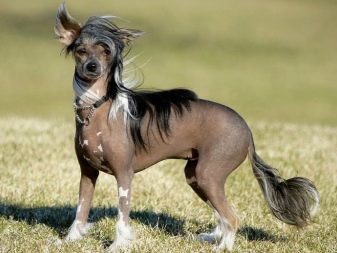
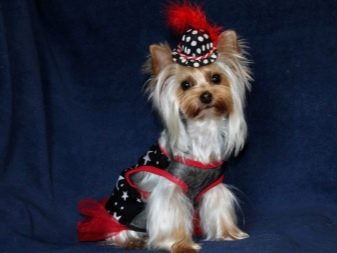
Sheepdogs in most cases lived next to peasants, who paid special attention to the performance of the animals, not their beauty.
And yet, despite the lack of interest, people approached the breeding of this breed only in the second half of the 19th century. It was then that the shepherd dogs had an expanded palette of coat colors, although the main assessment was also given to the performance of the breed, namely, assistance in grazing. They skillfully drove the animals that had strayed from the herd and protected the livestock from the encroachments of wild animals.
A similar opinion was held by Belgian farmers, who considered shepherds only from a consumer point of view. But that all changed with the onset of the Industrial Revolution. In this critical period for Belgium, the country's economy began to rebuild. The villagers were forced to move from their villages to the cities, which negatively affected the demand for herding dogs.
The Belgian breed owes its official recognition to the outbreak of nationalist sentiments that arose in the 19th century in Europe. Then the majority of nationalities began to engage in the creation of special breeds of four-footed pets, which would become their national heritage. Already in September 1891, a society of Belgian breed breeders was formed in Brussels.
A little later, in November, the first exhibition event was held in Kurgam, at which more than a hundred purebred dogs performed. As an official guest, Professor Riyul was invited, who was engaged in the study of canine characteristics and planned to assign a certain breed to each Belgian region.
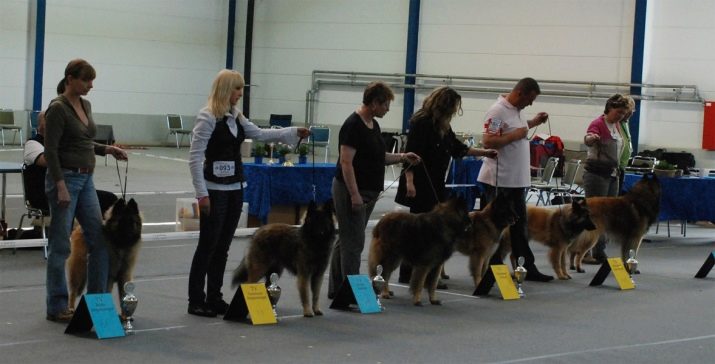
Among the dogs attending the show, only a third received a recommendation from a scientist for further breeding. Riyul chose medium-sized dogs, and the professor was not at all interested in the characteristics of the fur of the animals. Thanks to his painstaking work in 1892, the primary exterior of the Belgian Shepherd Dogs was presented.
The breeding process of the breed took place over several decades. At first, only three categories of the Belgian Shepherd were presented, distinguished by color. This fact prompted a lot of negative emotions among the rest of the dog breeders, as their pupils did not fit the standards of the officially accepted categories. They also created their own canine club, where they were engaged in independent breeding of their outbred pets. Such a confrontation between dog breeders lasted for several years, after which the clubs merged, which influenced the change in breed standards.
Thus, the three categories of Belgian Shepherd Dogs were supplemented by a fourth variety.
- Groenendael. Dogs with black hair of medium size. They owe their name to a small village located not far from Brussels.
- Laquenois... Long-haired dogs with an ash-colored coat. The breed received its name in honor of one of the Laken districts.
- Malinois. Short-haired dogs with a yellowish color. The name of the variety comes from the small town of Mechelena.
- Tervuren. Long-haired dogs with a red color. The category got its name in honor of a small town located not far from the capital.
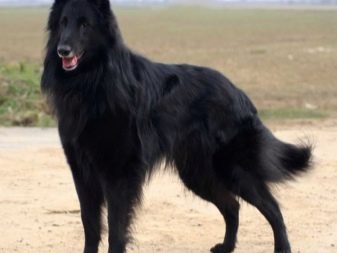
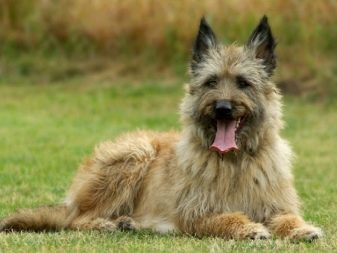

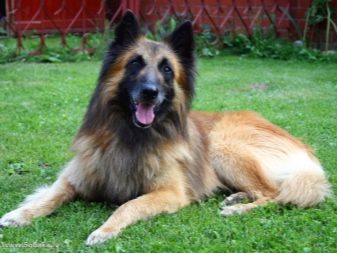
And yet, numerous disputes between breeders do not subside to this day. Members of the Belgian club insist that the four varieties of Belgian Shepherd Dogs presented are different breeds, and the World Federation of Cynologists claims that they are the same Belgian Shepherd Dogs. Accordingly, the authorities are credible, namely the Federation of Dog Handlers.
However, recognition of the breed only by Belgian dog handlers turned out to be insufficient.The next step towards world recognition was the appeal of breeders to the Royal Organization of Cynologists. However, their application was rejected. In 1901, the breed was registered by members of the Royal Society. Moreover, for each category, special standards were formulated, where the main criteria were coat color and length.
With the onset of the 20th century, Belgian Shepherds began to enter the service of the Belgian police. Along with this, they patrolled state borders, escorting the military, and caught smugglers with prohibited items trying to illegally enter their territory. Thanks to their skills, in 1907, these dogs began to be taken into service in the United States, and a year later they entered service in France.
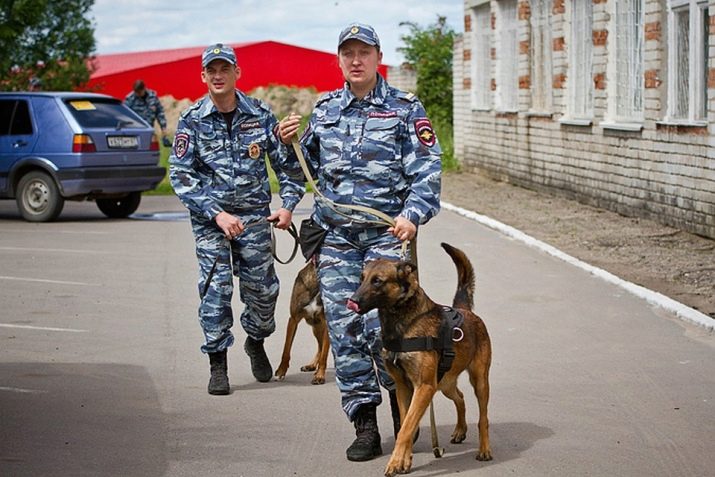
Particular attention should be paid to the role of the Belgian dog breed in wartime. Throughout the First World War, dogs were on duty. They were engaged in the protection of entrusted perimeters, delivered mail, helped military doctors to take the wounded from the battlefield. It was this period that turned the views of dog breeders on the Belgian shepherd dogs. In such a difficult time, animals revealed all the traits of their character, namely courage, strength and loyalty.
After the end of hostilities, Belgian Shepherds became very interested in dog breeders from different countries. However, the popularity of the subspecies was not uniform. The most preferred categories were Groenendael and Malinois, and this is the case today.
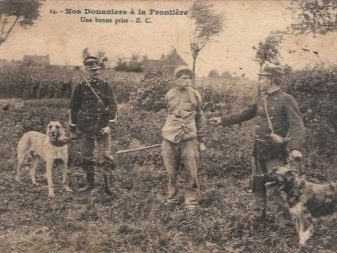
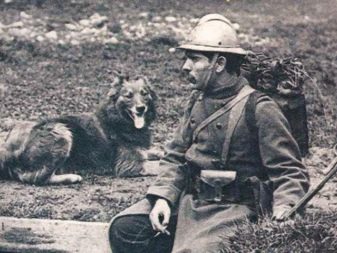
Description of the breed
Belgian Shepherds are medium sized robust dogs. Their external data and structural features speak of performance. It is important to note that there is no sophistication in the exterior of the Belgians.
The beauty of the animal lies in other features, namely the muscles and movements that are noticeable in every step of the animal. In addition, the dimensions of animals differ in gender - the height of males is 60-66 cm, and the height of females is 56-62 cm. The color depends entirely on their category. The average weight of an adult male is 26-30 kg, while females can weigh a little less, namely 20-25 kg.
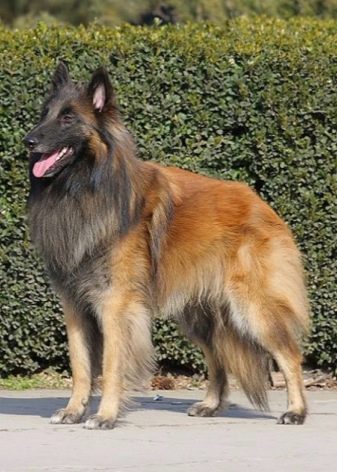
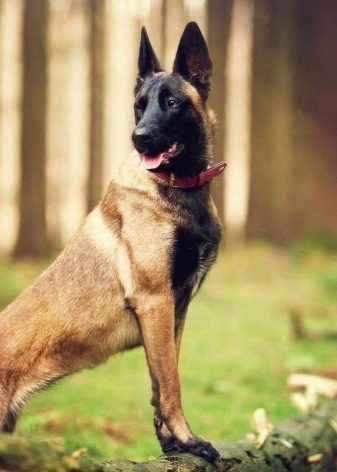
According to the characteristics of the exterior, the Belgian Shepherd Dogs are distinguished by moderate body lines. The head is distinguished by a harmonious build, but it seems a little dry. The skull is relatively proportional. The frontal part lacks clear lines. The cheekbones are barely noticeable against the general background of the muzzle, while they have developed muscles.
The muzzle of shepherd dogs has an elongated shape, tapering towards the tip of the nose. The nostrils are black and wide. The thin lines of the lips are tightly pressed against the jaws. There is no pink pigmentation on the mucous membranes.
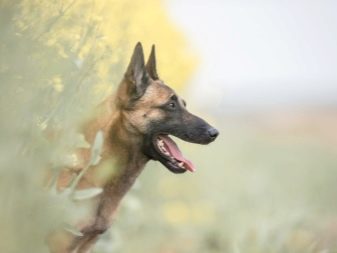
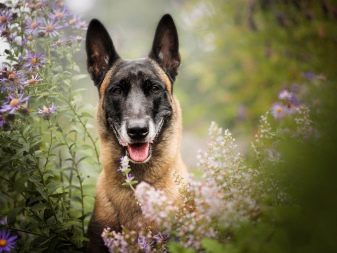
The ears are set high and look like triangles. The tips are pointed, the auricles are round in shape. In moments of alarm, the ears of the Belgians take an upright position and rush with their tips up.
The eyes are of medium size, in appearance they resemble the shape of an almond. There is a brown pigment on the iris. The brighter it is, the better the dog's exterior. The eyelids of the Belgian Shepherd Dogs have a clear and even outline of black color. In the eyes of these dogs, one can feel the mind and interest in the world around them.
A distinctive feature of the Belgians is their snow-white teeth, which require careful care. According to the exterior standard, the bite can be scissor or straight. The absence of pervalyars is not a culling of the breed.
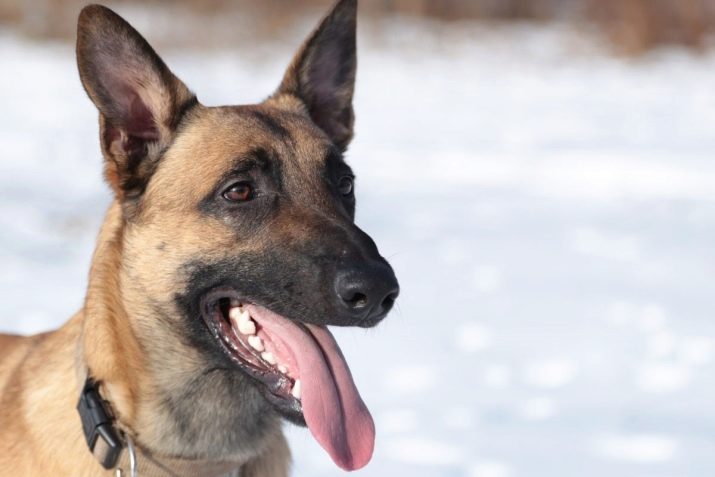
The neck of the Belgian breed has an elongated shape, flowing smoothly to the body, which is characterized by proportionality. The small rib cage is distinguished by the voluminous muscles that characterize the dog's hardiness.
The tail of the Belgians is of medium length, with a thickened part at the base. When completely calm, the tail hangs down, and when excited, it rises.


The forelimbs of the Belgians have a strong bone structure and well-developed muscles. The toes are tightly pressed together.The hind legs are located perpendicular to the ground, have a curved shape, which allows dogs to push off any surface without much difficulty.
Next, you should consider the distinctive features of the coat of each category of Belgian Shepherd Dogs.
- Groenendael are the owners of long hair with a thick undercoat that protects the animal from bad weather. A distinctive feature of Groenendael wool is the lack of luster.
- Laquenois have a rough and rough coat.
- Short wool in category malinois located almost over the entire surface of the body. An exception is the collar, hips and tail.
- Tervuren wool in many ways resembles the "fur coat" of the Groenendael with the only difference in the length of the hair on the head and back of the legs.
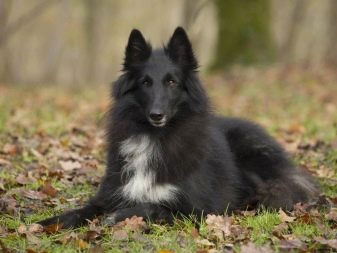
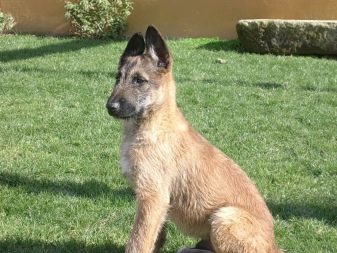
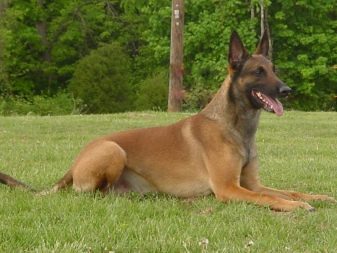
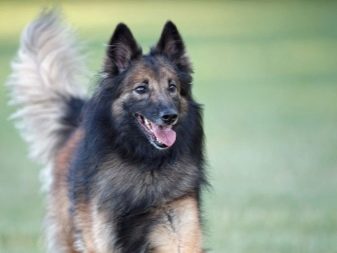
Varieties
After reviewing the generalized description of the exterior of the Belgian Shepherd Dogs, you need to take a closer look at each category of this breed separately. As you know, today there are four categories of the Belgian Shepherd breed.
- groenendael;
- tervuren;
- malinois;
- Laquenois.
The first three varieties have many similarities in appearance. The fourth variety is considered small in number, respectively, it has significant differences in relation to its counterparts. Their ears are somewhat smaller, the muzzle is shorter, but the body is much denser.

In terms of performance, all categories of Belgian Shepherd Dogs have similar characteristics, although each individual breed has some personality traits.
But the main difference between the presented categories of Belgian shepherd dogs is the color of the coat and its texture.
Groenendael
These adorable long-haired pets are much more common in black. Some representatives of this category have white fur on the chest, reminiscent of a tie. These dogs have an inquisitive mind, they are very sensitive to the mood of their owner and at any moment they are ready to lend him a "helping paw."

Tervuren
These dogs have a fairly long coat, which has a bright red color with a tint of red tint. There is a neat black mask on the face. A distinctive feature of the character of these dogs is courage. Without hesitation, they are ready to rush to protect their family.
Tervuren Sheepdogs are ideal guardians of any property.
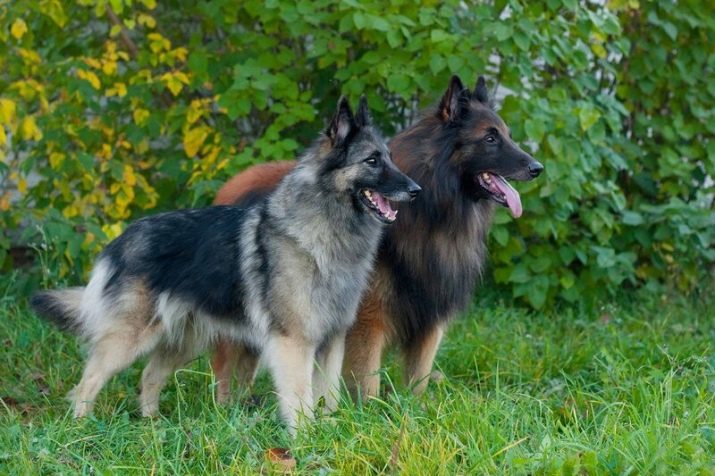
Malinois
Unlike their counterparts, representatives of this category are shorthaired. Their color is fawn, on the muzzle there is a black mask with neat contours. By nature, these dogs can show a dominant position. Malinois are gambling creatures ready to play all day long. They have excellent watchdog qualities.
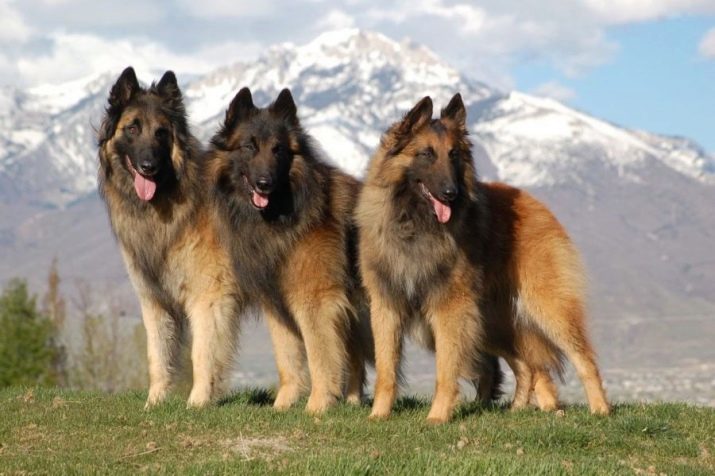
Laquenois
A distinctive feature of these dogs is the tough, ash-colored coat. Some representatives of this category may have a reddish color, closer to a yellow shade. By nature, these creatures are very good-natured, calm and obedient.
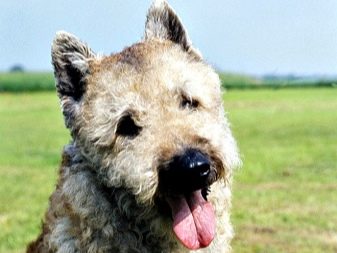
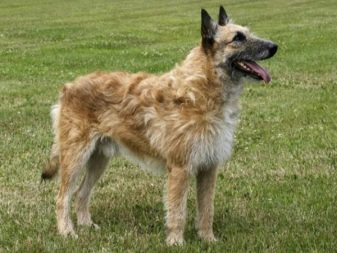
Character and behavior
The Belgian Shepherd is a rather unusual breed. This is confirmed by the variety of characters in each category of the breed. When you get to know the animal, these factors are not striking, but after spending some time with it, it will become clear that each dog behaves differently. For example, the Groenendael is ideal for the role of a security guard. Not a single offender can escape his attention.
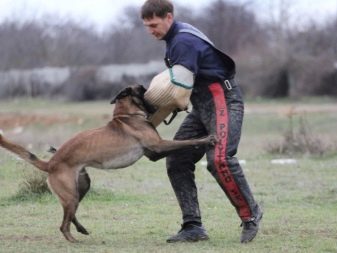
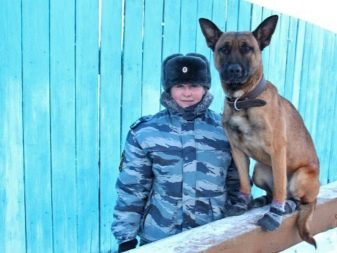
As soon as the Groenendael notices a danger, it notifies its owners with loud barks. But he experiences fear and shyness in the company of strangers. At the same time, even to the family of their owner, these pets show some caution. The dog does not immediately have confidence in the people he sees for the first time in his life.
Representatives of this category are quite mobile animals. They tend to take care of and take care of each family member. The ideal hosts for the Groenendael will be people with an active lifestyle. Thanks to this, the dog will not sit in four walls and will be able to get out with the owner for long walks. If you do not give the animal natural freedom, the dog will throw out the accumulated energy in the house. And it may not always end well.
For representatives of this category of shepherd dogs, it is advisable to purchase a ball or frisbee. During the walks, you should help the pet to practice its search skills, for which the Belgian will be very grateful to you.


The Laenois Belgian Shepherd category combines somewhat conflicting characteristics. For example, playfulness and seriousness, active lifestyle and passive relaxation. Along with the Groenendael, Lakinua efficiently cope with the work of a security guard and, if necessary, are ready to engage in a fight with the intruder, thereby protecting their owner. Lakinua easily finds a common language with other pets, if, as a puppy, she grew up with other four-legged family members.
The exceptions are rodents and caged birds. As an ideal pastime, the Belgian Laenois prefer going out to the country, trips to the mountains, where the animal can get physical activity and throw out the accumulated energy.
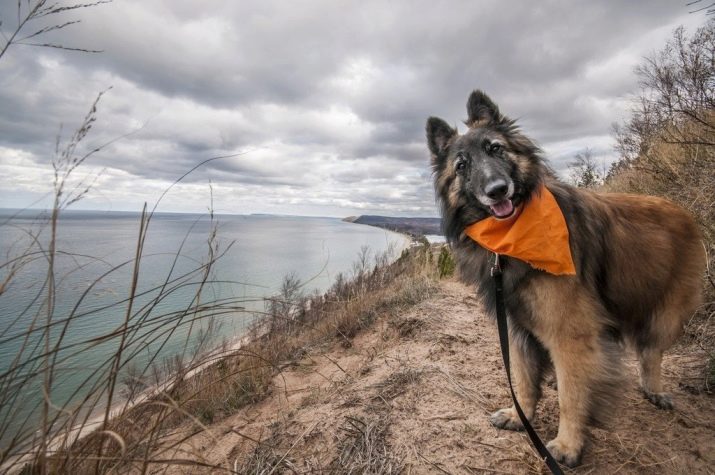
Representatives of the Malinois category, along with their fellows, need regular shaking up in order to be able to throw out the accumulated energy. Otherwise, they are very balanced and obedient dogs. Like a devoted dog, they tread on the heels of their owner and listen carefully to his every word.
Malinois doesn't like being alone. Left alone in a stuffy apartment, such a dog may begin to yearn, and then will try to get rid of the accumulated energy, which can lead to a small pogrom. The owner of a Malinois shepherd should pay a lot of attention to his pet, but at the same time not pamper the dog, and, if necessary, be strict. Although this may not be required since representatives of this breed are distinguished by a docile nature.
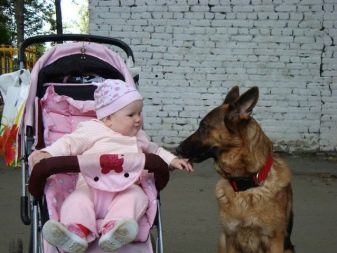
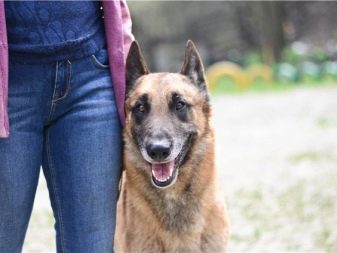
The Belgian tervuren, unlike its brethren, is distinguished by its impulsive character and lively temperament. Although initially the first representatives of this category were shy. As a result of tribal selection, these character traits have been eradicated. Tervurens actively respond to any sign of their owner, so even the call to an animal smoothly flows into a fun game.
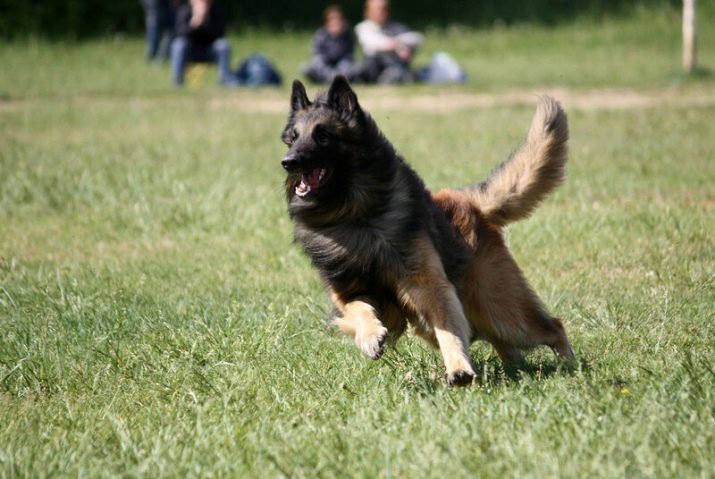
It is worth noting that representatives of this breed category experience the maximum degree of affection only for one of the family members, who is accepted as the owner. The playful nature of the animal requires constant communication with the person. If the dog remains alone for a while, it can direct its energy in an unnecessary direction, namely, to break the slippers or break the vase.
The presented four categories of Belgian Shepherd Dogs share common features of the breed.
- These dogs are able to independently make decisions in the most unexpected situations.
- Belgian Shepherds are quite sensitive creatures. They keenly accept criticism and comments from the owner.
- Once in an unknown environment, they easily adapt to it.
- They have a tendency to dominate other representatives of the animal world.
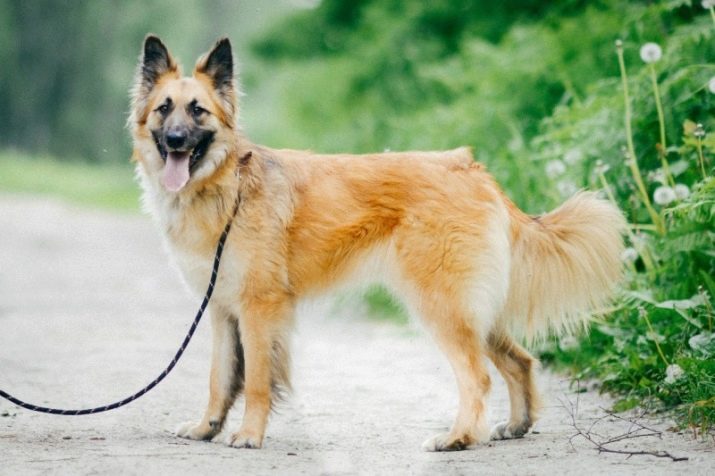
How to choose a puppy?
Choosing a small and healthy puppy is not an easy task. At the same time, it makes no difference which category of the Belgian breed was preferred.
First of all, future owners need ask the breeder for information about the puppy's parents, and if possible, even get to know them. This fact will allow you to figure out what qualities and character traits the dog could inherit from its ancestors.
When buying a dog, you need to pay attention to its age. The ideal option is 2 months. By this time, the puppies of the Belgian Shepherd have already partially formed the psyche, due to which they easily perceive the world around them.
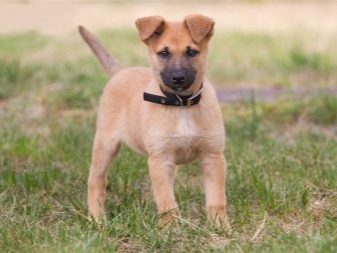

Then you can proceed to direct examination of all the puppies from the litter in order to choose the most interesting individual for yourself. It is necessary to pay attention to the most active and lively kids. These puppies have very strong immunity and in the future they will not cause trouble for the owner with diseases, lack of appetite or mood. Besides, playful puppies are quite easy and quick to train.
If a puppy shows fearfulness and lethargic behavior, this does not mean that in adulthood he will be as calm, perhaps he has any deviations in health.
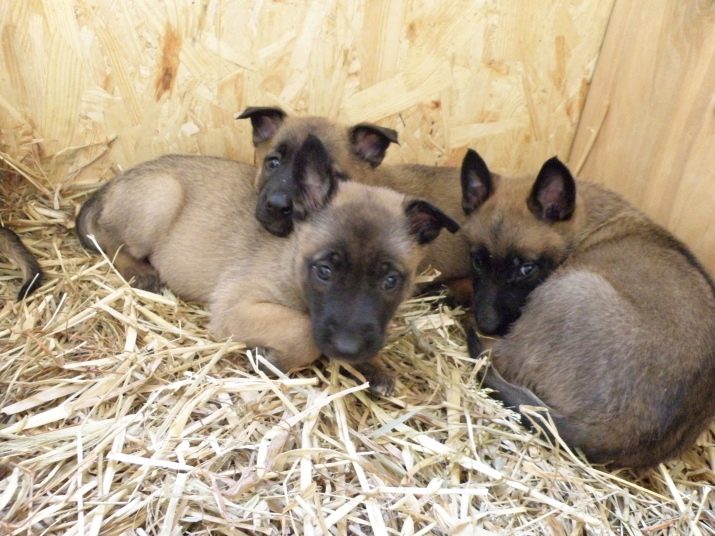
And most importantly, you should buy a thoroughbred puppy in official and reputable kennels. It is extremely dangerous to buy a puppy at the poultry market, even though the price of the animal is low. Instead of a Belgian Shepherd puppy, you can bring a mongrel home from there. And if you manage to acquire a purebred dog outside the kennel, most likely the body of such an animal is weak and has a predisposition to multiple diseases, which is why you will have to constantly visit veterinary clinics.
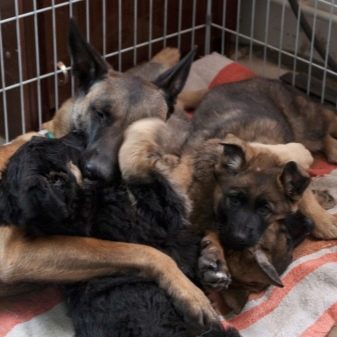
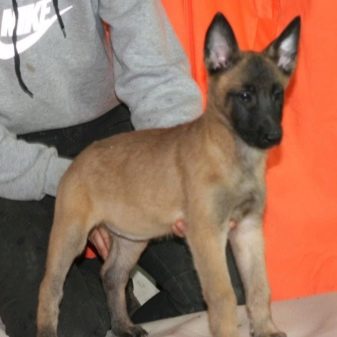
How to care?
High-quality grooming of Belgian Shepherd Dogs is a laborious process. The complexity of the job is in cleaning and processing the hair of animals.
The Belgians moult in summer and winter. It is very important to comb your dog every day during molting. In spring and autumn, it is enough to scratch the animal once a week. To comb the wool efficiently, you must use a fine-toothed brush. Such a device provides maximum disposal of hairs that have fallen out. It is important to scratch the dog in a calm environment and exclusively in the direction of the coat.
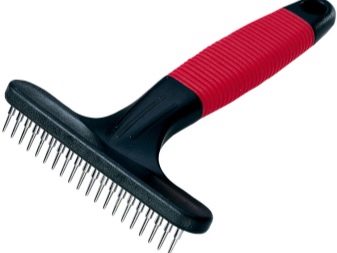
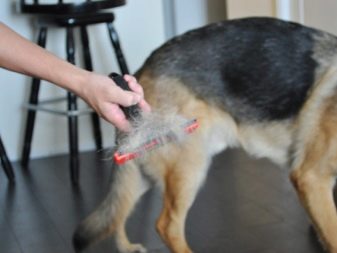
The rest of the care depends entirely on the category of Belgians.
Groenendael dogs tend to molt profusely. Loose hair will lie on furniture, floors, clothes, and even on the kitchen table. Lakinua have a curly coat, which must be trimmed twice a year, so that the appearance of the animal will be neat and well-groomed.
It is best to use a hard-toothed massage brush as a comb.
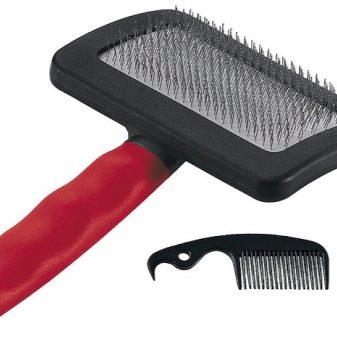
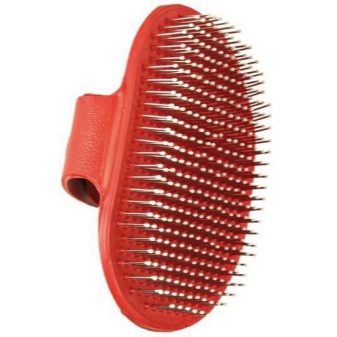
The most unpretentious representative of the Belgian Shepherd is the Malinois. Their coat is short, due to which the pet can be combed once a week. This is enough to get rid of dead hairs and create a presentable appearance for the dog.
A distinctive feature of the tervuren category is the double coat. For this reason, representatives of this breed suffer from the formation of tangles. Dogs category tervuren should be combed thoroughly at least several times a week... In addition, they must be taught from puppyhood to the procedure for clipping hair on their paws.
Bathing of the Belgians is extremely rare. Specialized shampoos for thick hair, used in bathing procedures, can negatively affect the structure of the dog's hair, the coat will lose its stiffness and dullness. If the unpleasant smell of a dirty dog begins to emanate from the dog, you can use special dry products with a pleasant aroma.
The dog's eyes and ears should be checked on a regular basis. If strange discharge occurs, you need to get rid of them with a cotton swab or a disc dipped in warm water or a weak tea brewing solution.
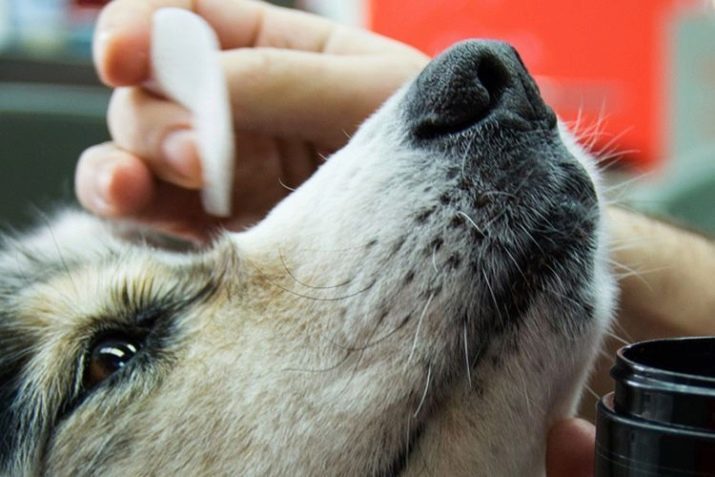
If the discharge does not stop, you will need to visit a veterinarian, as this may be a symptom of an infectious disease.
Owners of large dogs do not know the troubles of clipping, and Belgian Shepherds are no exception. They spend a lot of time outdoors, their claws grind on the asphalt on their own. And only in winter, when there is ice and snow on the roads, the owner will need to do a "manicure" for his dog using a special claw cutter.Then you need to file the sharp corners to remove the jags.
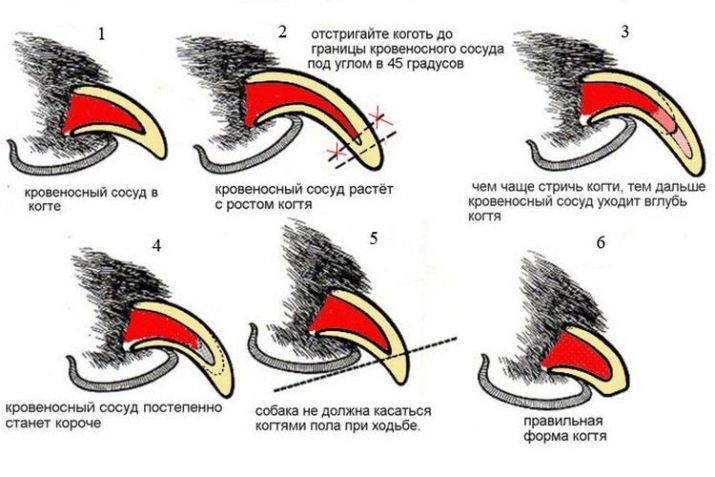
Caring for the dog's oral cavity is equally important. The shepherd dog needs daily brushing, so the owner of the animal needs to purchase a special toothbrush. It is forbidden to use toothpastes made for human consumption on a dog's mouth. For the treatment of the oral cavity of pets, special cleaning agents are created. These can be purchased at any pet store.
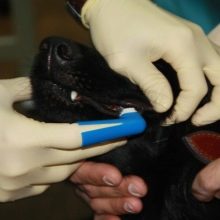

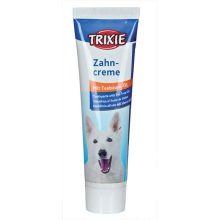
Feeding
Modern lovers of large breed dogs give their preference to industrial food. But the Belgian Shepherd Dogs are unpretentious in this matter and will eat what is in the bowl. And yet, for full development, the animal must be provided with a balanced diet.
Modern industrial feed completely provides pets with the necessary vitamins and minerals. The breeder, in turn, needs to purchase super premium food for his dog. The main thing is not to forget that a separate diet is developed for each age of the animal.
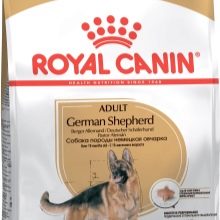
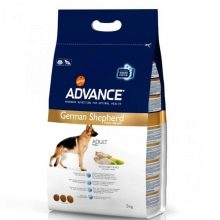
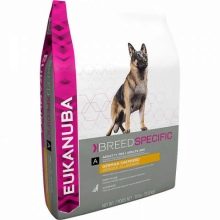
But the best way to feed the four-legged guard breed is the Belgian Shepherd. natural food. Important to remember, it doesn't have to be human food from the table. Otherwise, the animal will constantly beg, and sometimes even steal human food.
The dog's natural menu should be varied. Dogs are predators by nature. But this does not mean that they should only eat raw meat. For the full development of a shepherd dog, it is necessary to receive a varied diet, which should be based on lean meats, for example, beef, rabbit or chicken.
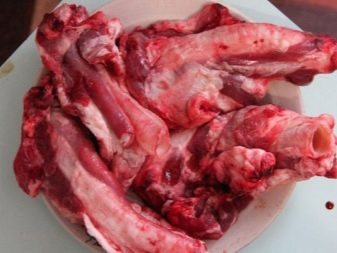
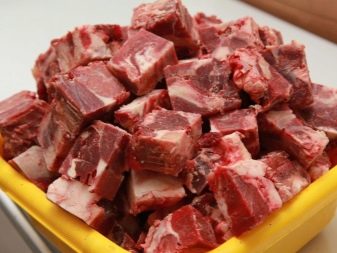
For breakfast, it is preferable to treat your pet with cereals, for example, buckwheat, rice or barley. At lunchtime, the dog should be fed stewed vegetables and vegetable oil should be added to them. Once a week, you should pamper your pet with sea fish, fermented milk products and boiled eggs, but in small quantities.
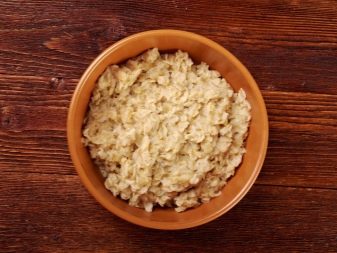
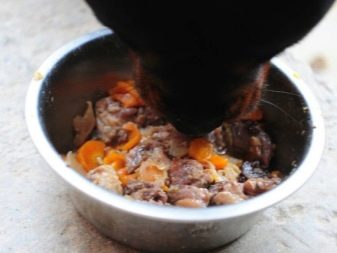
To know what vitamins you need to give your dog during the period of active growth, you need to contact your veterinarian. He will be able to choose the right vitamin and mineral complex so that the animal does not have a deficiency of elements important for health.
It is impossible to overfeed a Belgian shepherd dog, therefore, each individual portion must meet the age criterion. The older the dog is, the more food should be in the bowl.
It is strictly forbidden to feed the Belgian Shepherd Dog with sweets, smoked foods, tubular bones, raw pork and river fish. Violation of at least one of these prohibitions can result in serious health problems for the animal. For example, tubular bones, getting into the esophagus, can damage its walls, because of which the dog will have internal bleeding and it will be very difficult to save it. Chocolate for four-legged friends is a deadly poison. Fish may contain helminths.
The dog should always have access to clean drinking water. This is especially important for pets eating dry food, as it increases thirst.
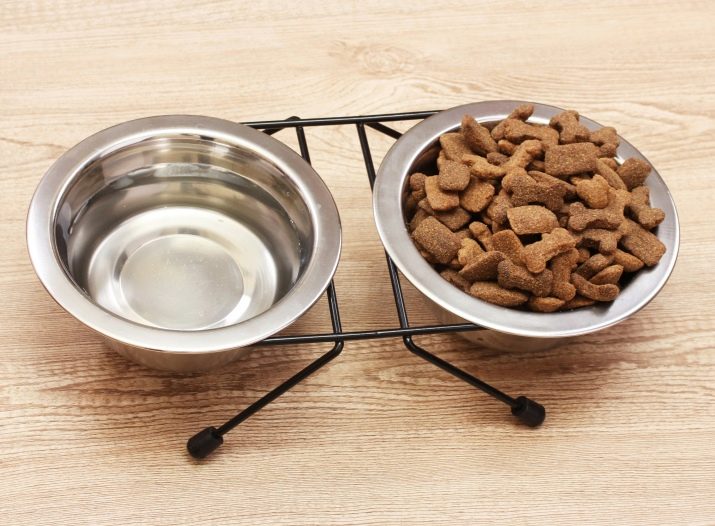
Education and training
The Belgian Shepherd Dog is a breed that must be trained at an early age. The main thing in this is not to forget about discernment. It is this factor that will help to maximally feel the state of mind of the dog, to understand its mood and psychological balance.
If the new owner is not sure that he will be able to raise a pet on his own, you should seek help from an experienced dog breeder who has been working exclusively with Belgians for more than a dozen years.
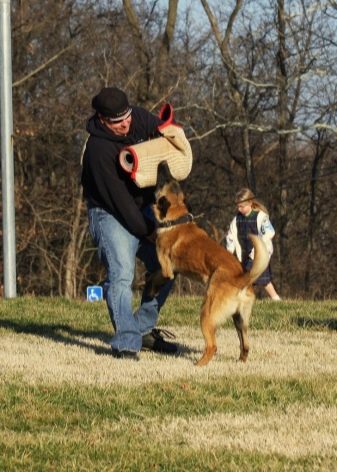
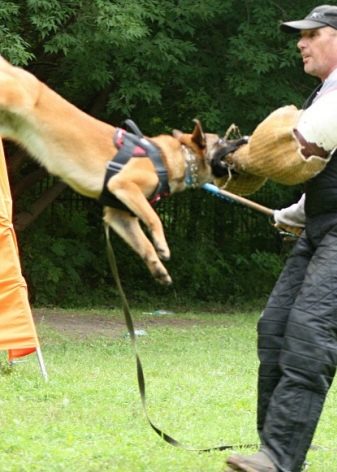
Belgian females are much more agreeable and calmer than males, who, by nature, need to show their independence of their own character. Experienced dog breeders recommend starting raising a puppy from the first day of his appearance in the house.
Initially, you should not bore the puppy with long walks and a variety of games. If your pet is stretched out on its bedding and begins to fall asleep, there is no need to disturb him. A dog, like any other creature, needs rest. After all, they still have a lot of time left to learn different commands, learn their own nickname, get used to a leash with a collar and not relieve themselves in the wrong place.

The nickname in the matter of education is a separate item. Firstly, the owner should remember that the pet's name should be short, and secondly, it should be associated exclusively with bright and kind emotions. You should not refer to a four-legged friend by name if he has naughty or ruined some thing. Realizing that punishment awaits him, the baby will not want to approach his master, accordingly, he will not respond to the nickname.
The process of training Belgian Shepherd Dogs has many nuances, depending on the breed category. It is important for Groenendael to unquestioningly execute commands and tasks. Representatives of this species treat training as a game that is of great benefit. For this reason, they do not create any problems and strictly follow the instructions of their owner. Although in some representatives of this breed, independence of character can overcome instinct, which will negatively affect the achievement of the set goal.
This is why Groenendael it is necessary to train at the earliest age, without giving the dog long breaks. Training should be daily, otherwise the dog will not be able to wait for obedience.
And only in the rarest cases will the intervention of an experienced dog handler be required.
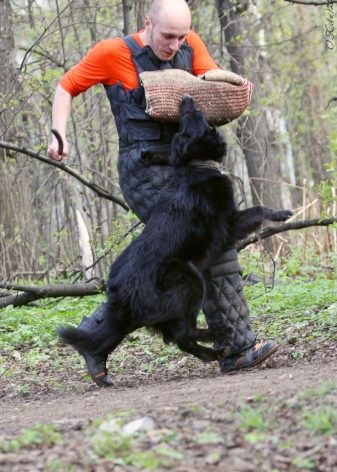
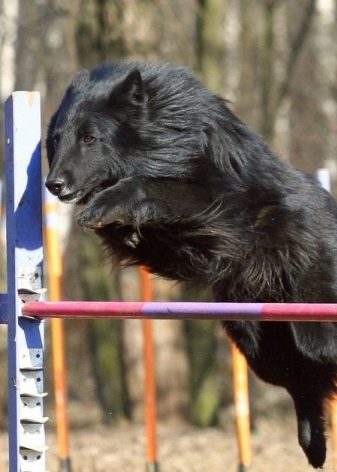
Lakenois, on the other hand, are easily amenable to training and gladly go to meet the owner. They will enthusiastically race with their owner or overcome the obstacle course. The main feature of these dogs is tirelessness. Rather, a person will get tired of coming up with tasks than a dog to perform them.
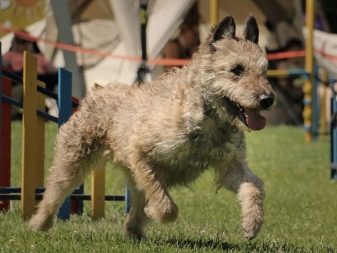
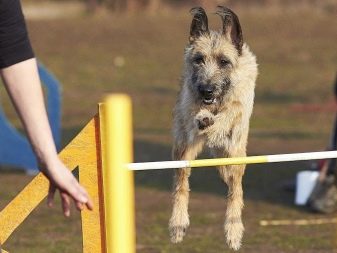
During training you should not use a stern voice and be overly persistent. The dog will feel this and will do exactly the opposite. But if you approach the issue of training correctly, you will be able to raise a real guard and a best friend for a large family. After all, it is the Laquenois for their qualities that are most often taken to the police service or to the army.
In addition to proper training, Malinois must be brought out to a common area with other dogs, where the shepherd can communicate with relatives, learn from them the basics of communication with their owners. They very quickly absorb the information received, which indicates their highly developed intelligence. Only canine companionship can play the opposite role. The dog will see the elements of disobedience in its relatives and can take them for granted.
Tervuren try to dominate and show more independence than other categories of the Belgian breed. An intensive course of command and obedience training is essential for these dogs. The owner should avoid oppressive attitudes and rude behavior when working with the animal. Otherwise, the pet will not perceive such behavior of the owner and will not react to his words.
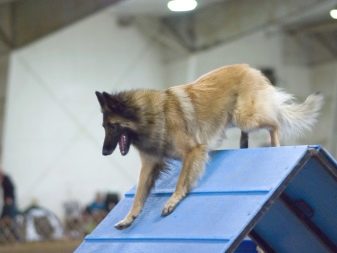
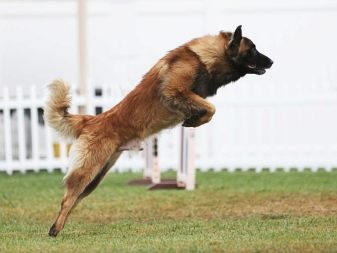
There are three golden rules to remember when training tervuren: consistency, patience and fairness.
The dog must consistently follow the commands, the owner must be patient if the dog does not cope with something, and then, in all fairness, treat the animal with a treat.
All about the Belgian Shepherd Dogs, see the next video.






































